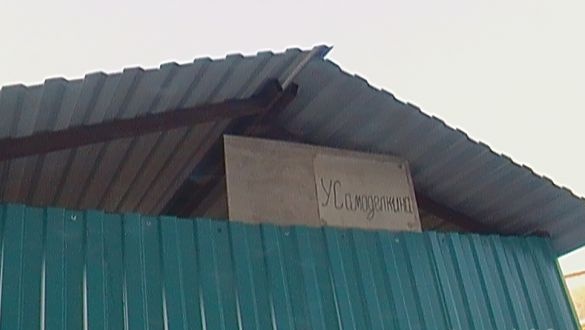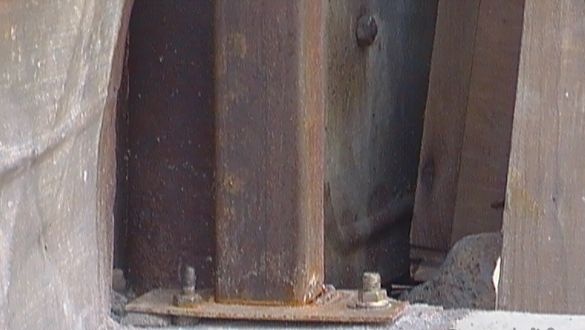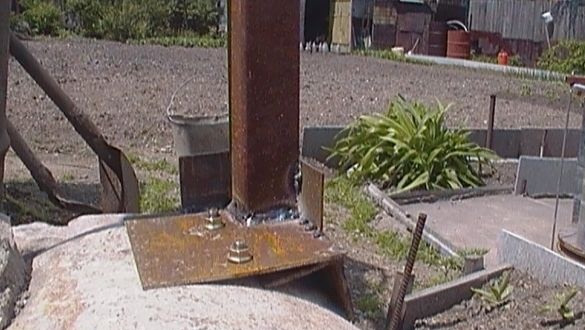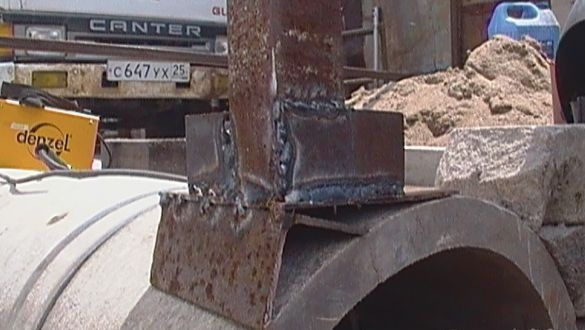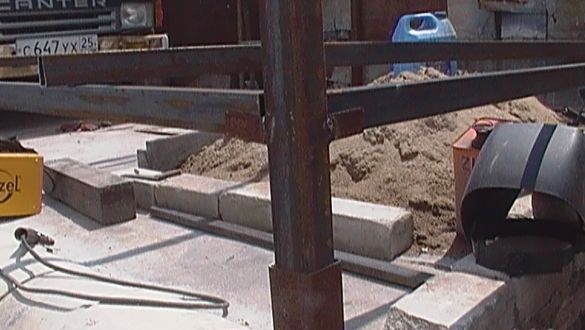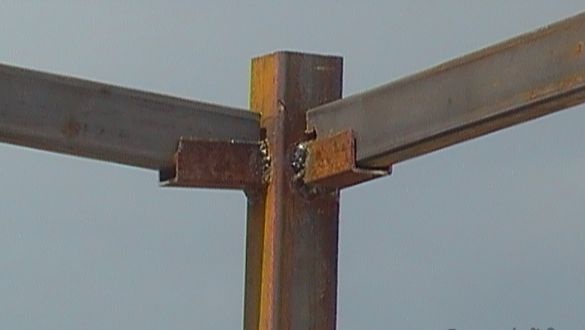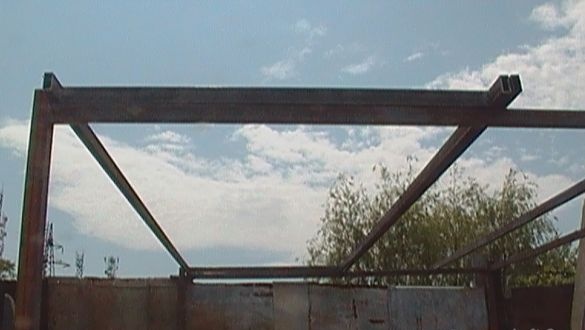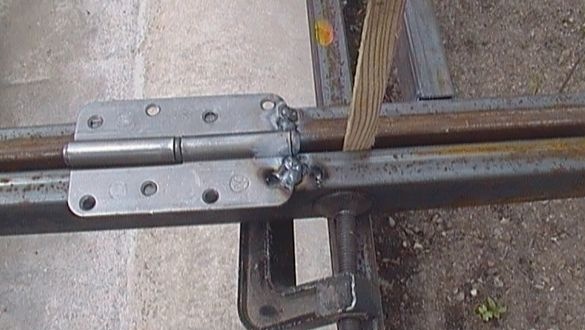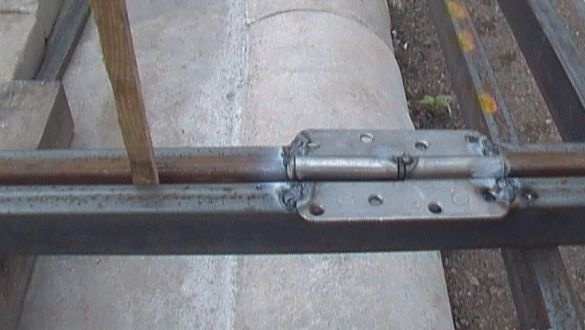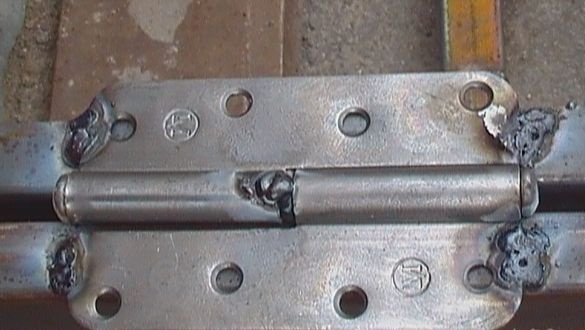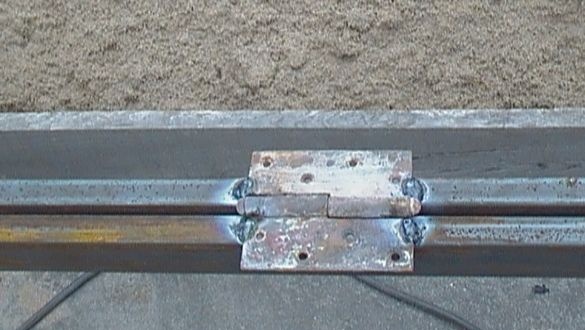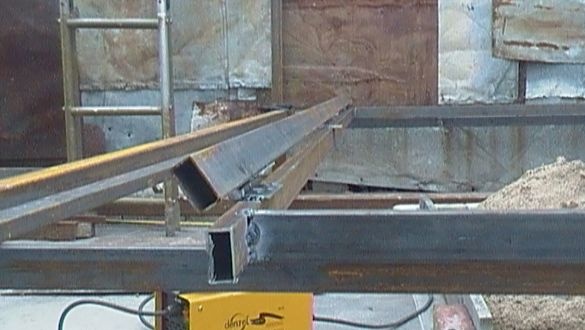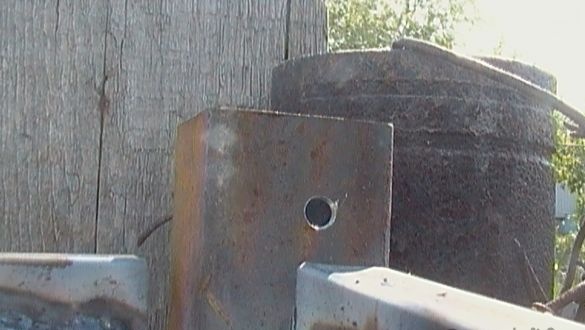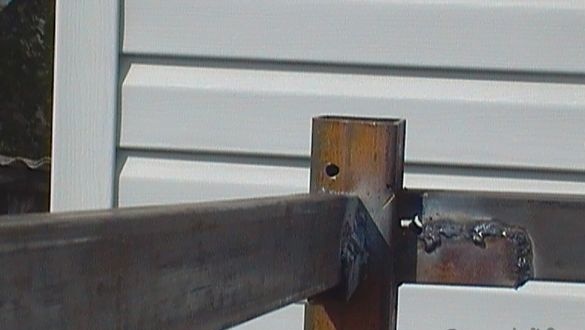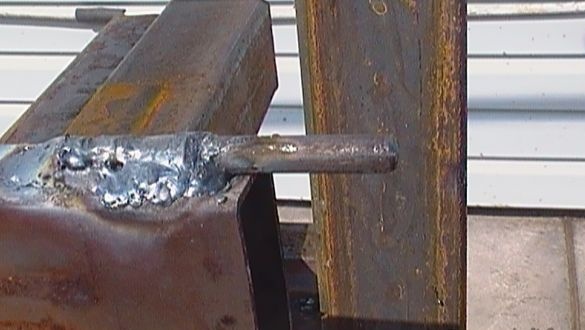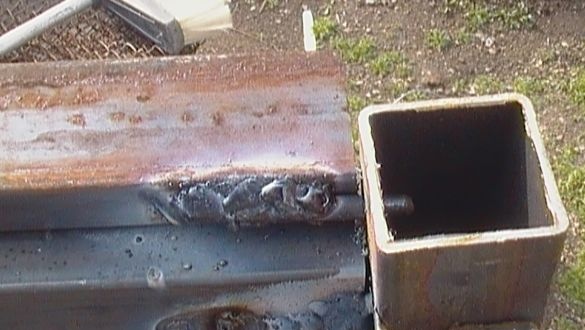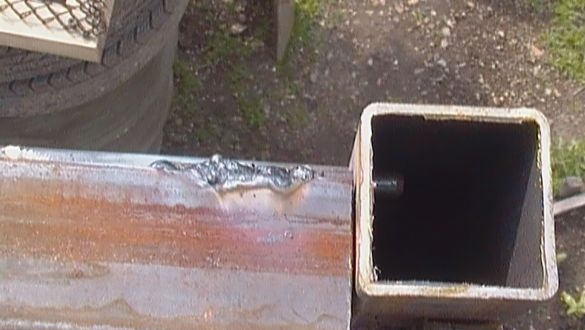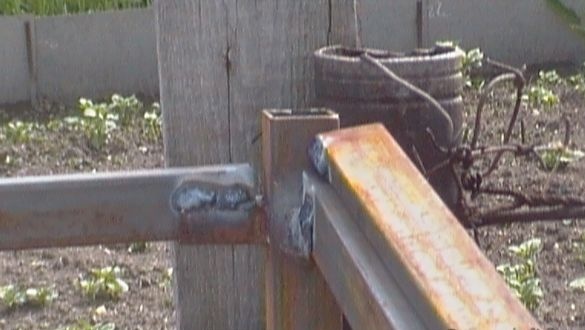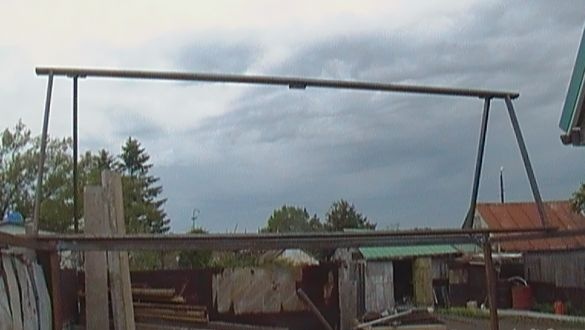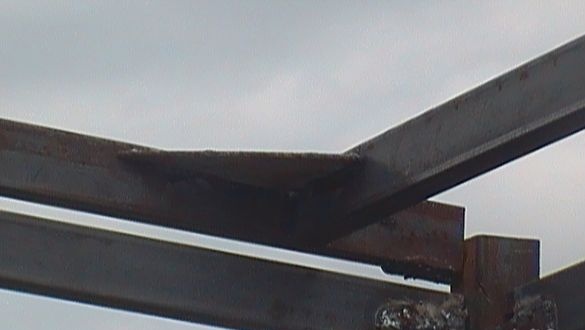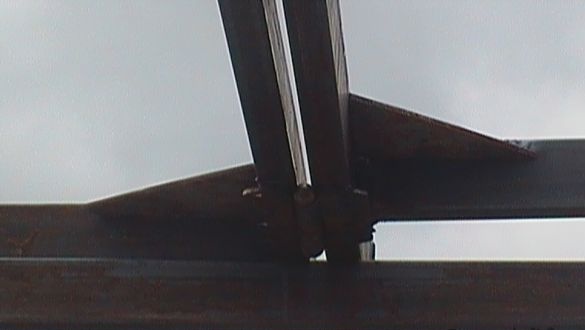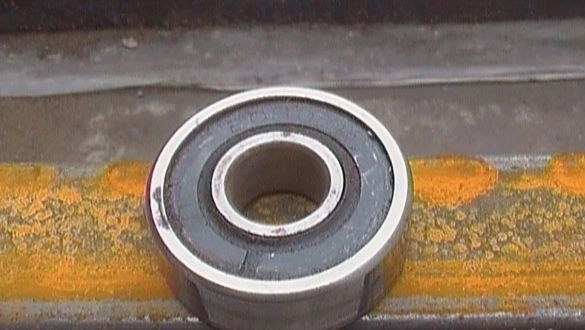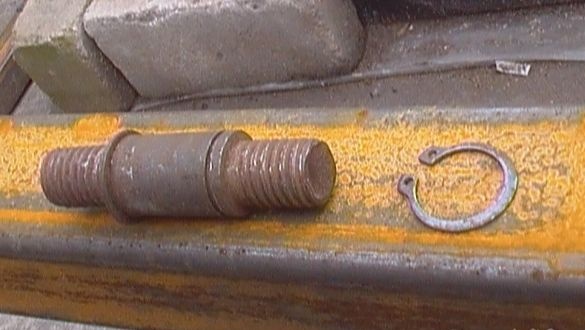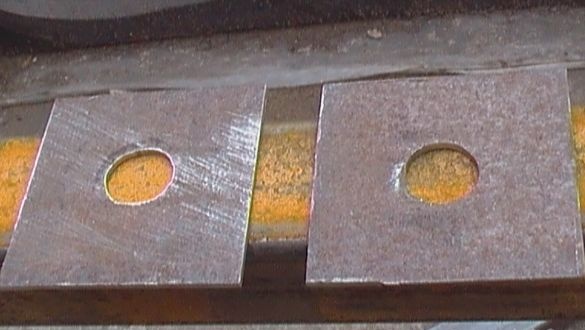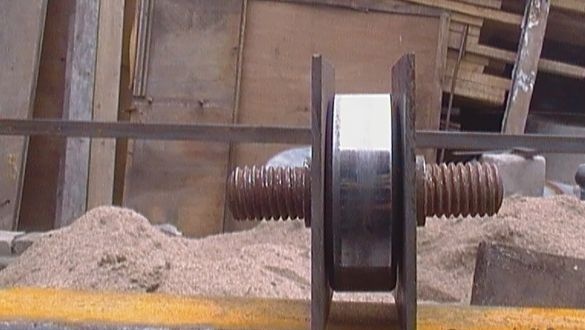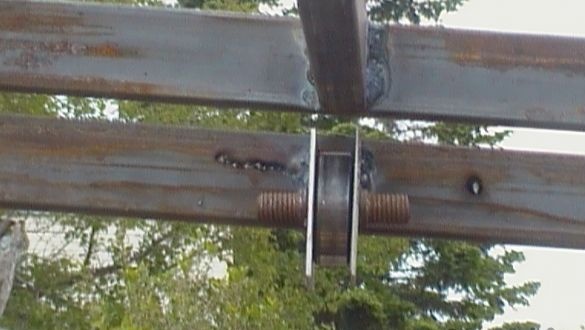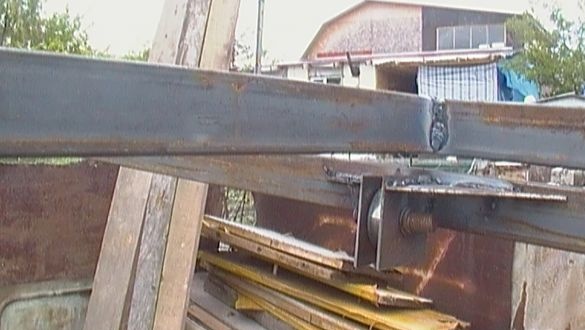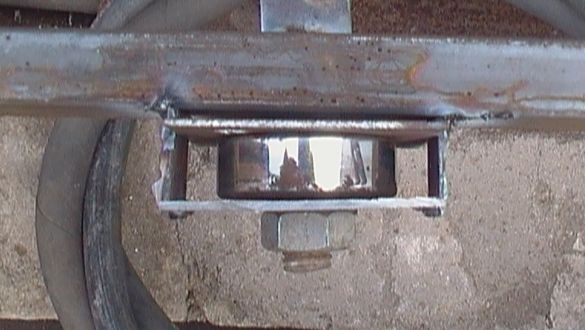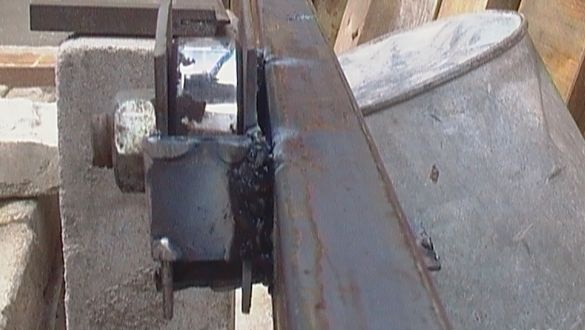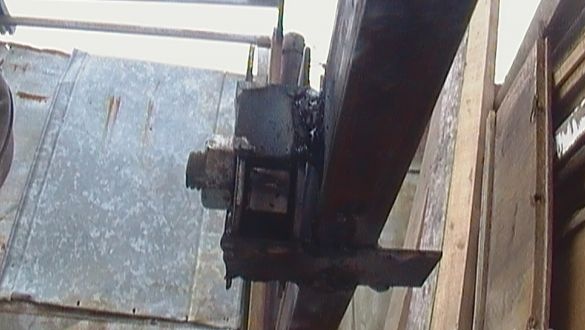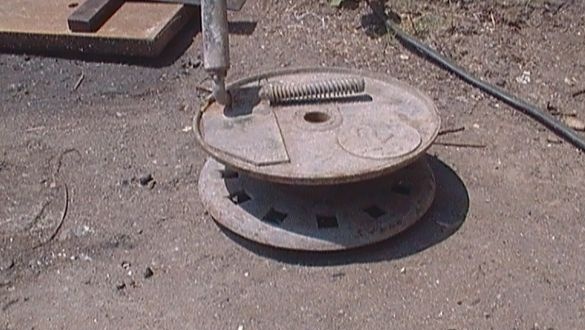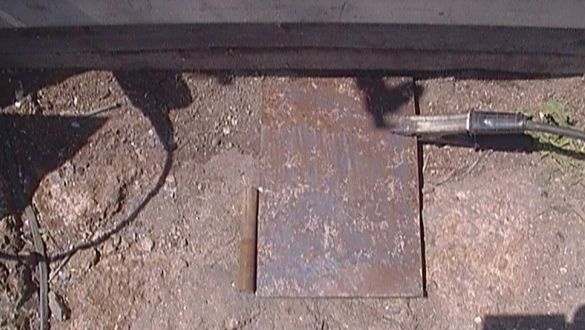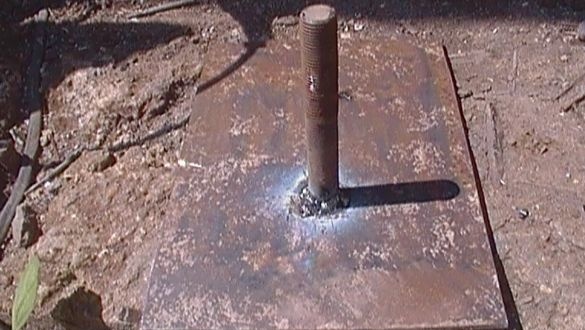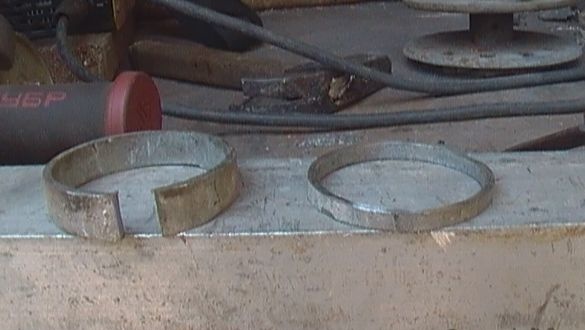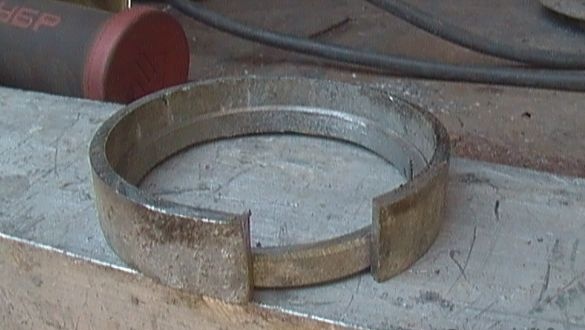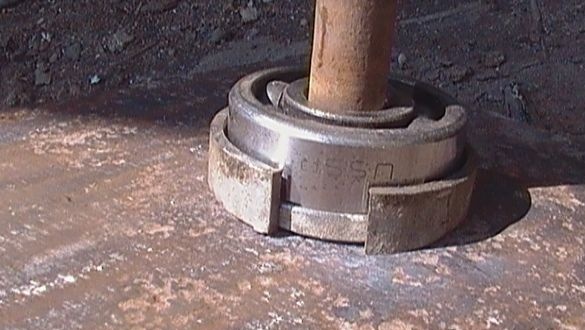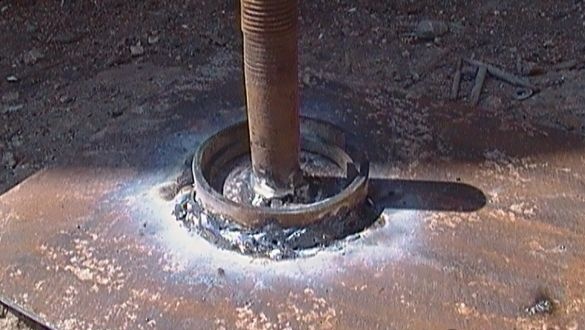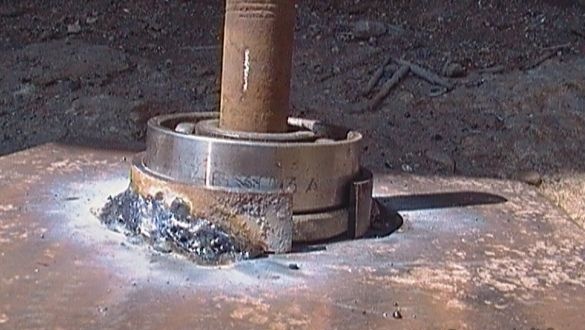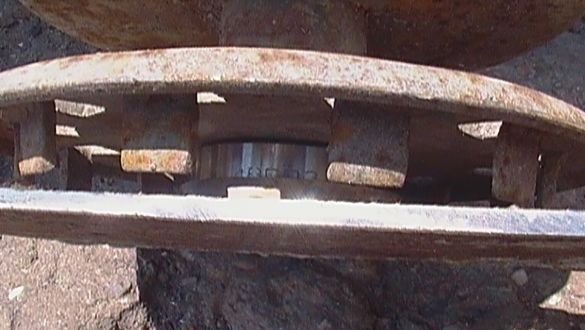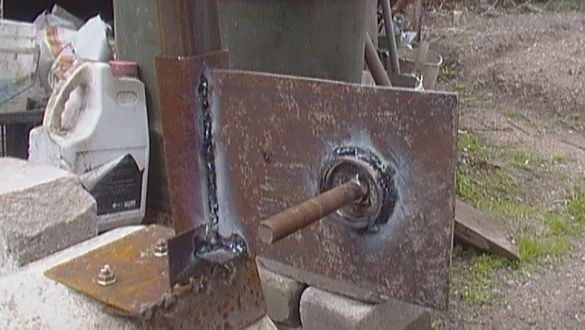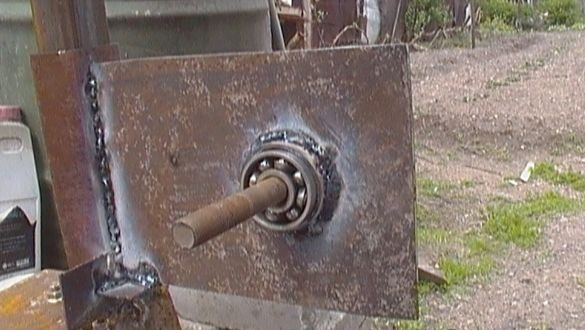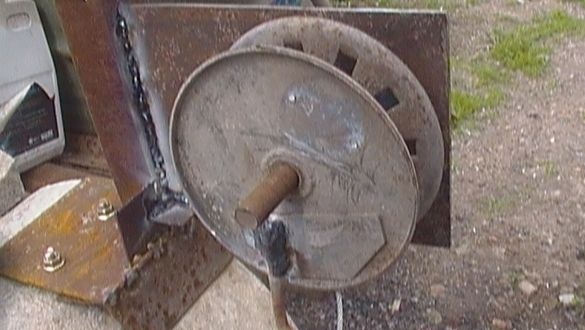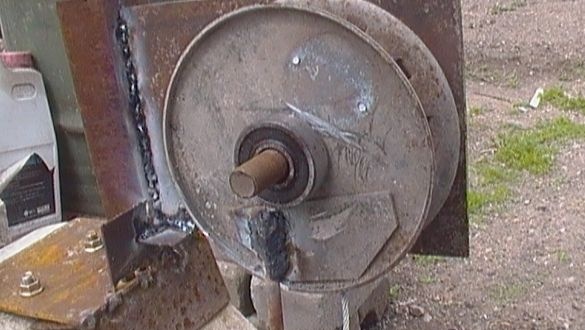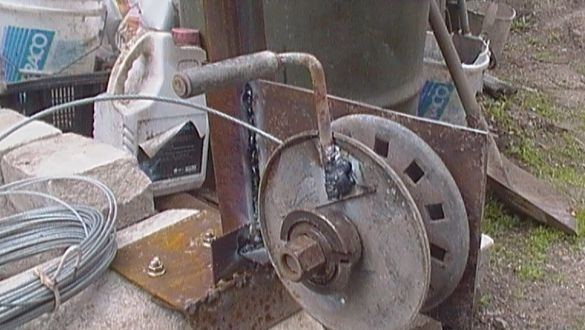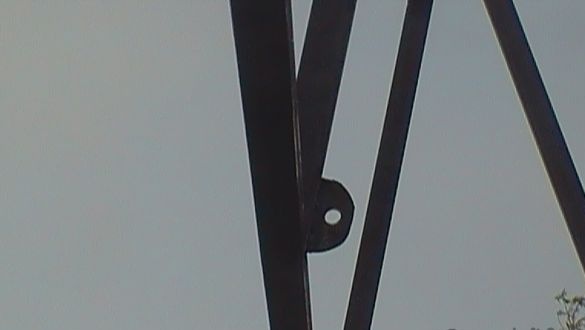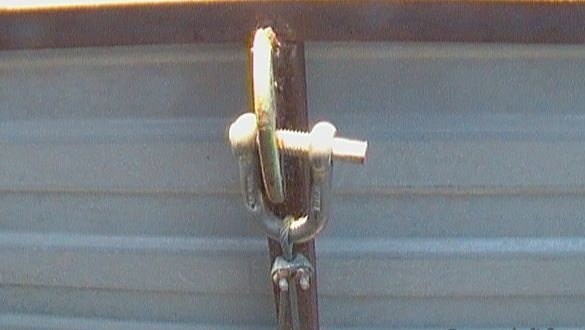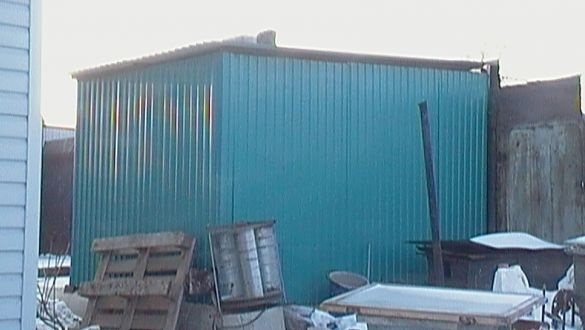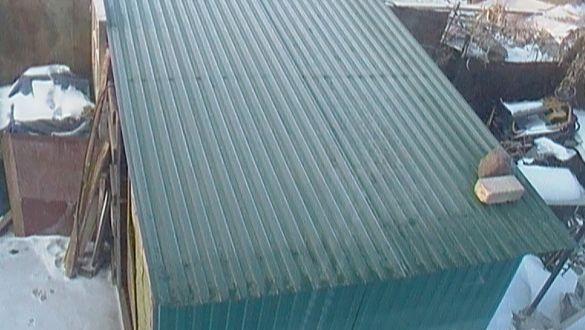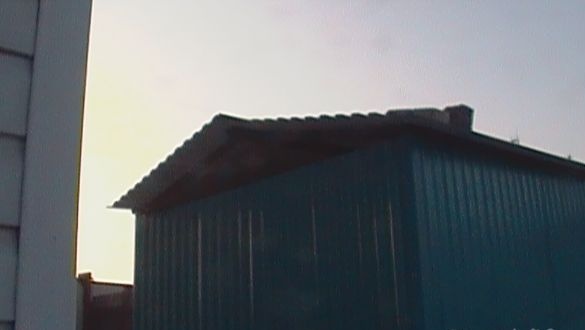Everyone living in a private house knows that a room is needed to store solid fuel for the winter. I propose the option: "a square with a lifting roof." The question immediately arises: why with a lift? From the experience of last year, when I had to throw coal into a square, I realized that this was an unpleasant work.
To make a square, I needed: profile pipe 20x40, 40x40.50x50, 25x25 mm, door awnings, welding machine, electrodes, grinder, cutting discs for metal, level, tape measure, drill with drills, anchor bolts, ASG, cement, sand, concrete mixer.
To do this, I just needed to extend the parking area for the car and I just dumped it and concreted it. On the one hand, instead of formwork, I laid out a “wall” of brick, and on the other, I laid an asbestos-cement pipe. A “device” was fixed on a concrete base with the help of anchors to hold posts made of a 50x50 profile pipe, 200 mm long and a 3 mm thick metal plate with dimensions 150 x 150 mm.
From the side of the pipe, I had to lay a corner for vertical mounting of the corner stand.
All this was welded by electric welding and installed at the corners of the future building, with one side of the building being a continuation of the fence with a neighbor. According to the dimensions I cut the poles and welded to them pieces of a profile pipe 25 x 25 mm without one side.
Subsequently, they laid jumpers in them and installed the vertical welded structure. For a folding roof, from a 20 x 40 mm pipe, first welded one half and, having applied the pipe from the second half, welded door awnings.
To maintain the distance between the pipes, I used a rail and a clamp.
In total, I took 3 awnings for the roof. The pivoting roof base did this: in the posts I drilled a 6.5 mm hole for the pin.
The first pin is welded to the pipe from the bottom.
And having installed in the hole, I welded the second one by inserting it into the hole of another rack.
Cooked the second half of the roof. The result is such a design.
Further reinforced corners with corners.
To lift the roof needed pulleys which I did not have.Without thinking much, I found a way out of this situation. 2 ball bearings, 2 axles for them and 4 pieces of sheet metal 3 mm thick.
Welding to the upper inner crossbar, I got the upper pulley.
The design was reinforced with corners with a long hypotenuse.
The lower pulley did almost the same, only the axis on one side had to be cut and 3 more plates added on the sides for attachment to the lower crossbar.
Then he cut the bottom plate. To win the cable, I needed a drum, which I found in scrap metal.
To install it, I cut out a plate and cut a piece of hairpin
which is welded to the plate.
For easy rotation of the drum I decided to "put" it on the bearing. Under the first bearing had to make a cage. I cut 2 pieces of pipe and got 2 rings, cut one.
I inserted the whole ring into the cut, aligning one of the edges.
Put the bearing on the axle in a place with a cage
and welded to the plate with the bearing removed.
I measured the drum, excellent.
Welded plate to the corner post.
Put the bearing
set the drum
put the second bearing
picked up and installed a washer that rests on the outer race of the bearing,
tightened the nut and secured the cable.
On the upper extreme level of the roof welded "ear" to engage the cable.
Passed the cable through the pulleys and made a loop. I made a “horseshoe” into the loop for towing auto and fixed on the "ear".
I tried the lift, the top of the back wall bends inward. I had to weld the gain. In the future, I just sheathed the entire structure with a professional sheet,
also closed the roof with a professional sheet.
As a result of the time spent it turned out:
This year, 2016, coal did not throw! He simply lifted the roof and the machine poured coal to the back of the square. It remains to make a lifting front wall and a door in it.


